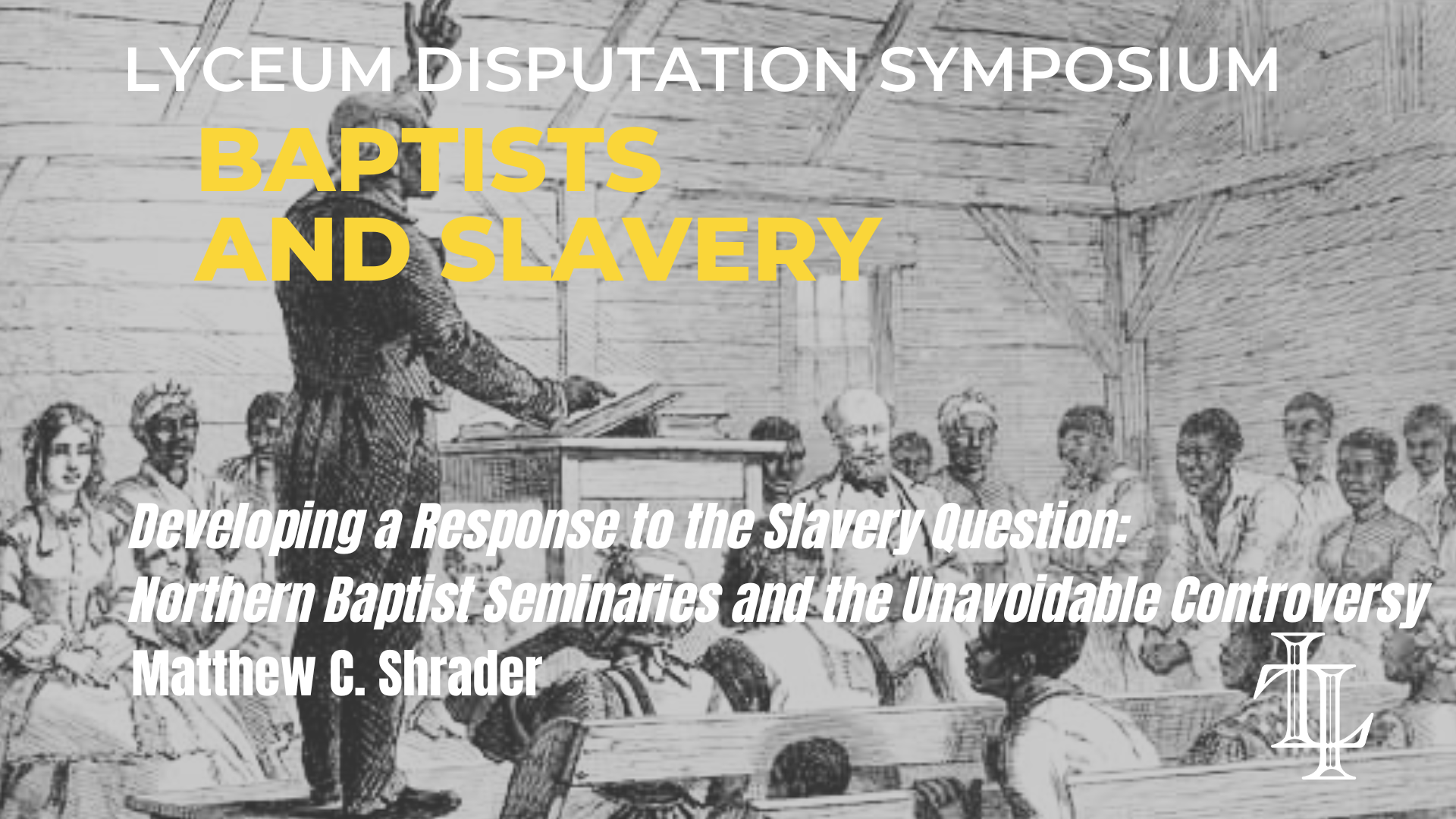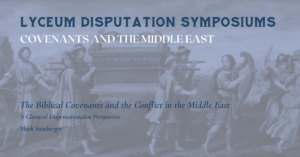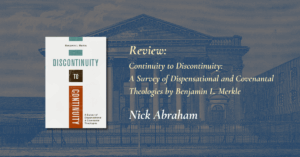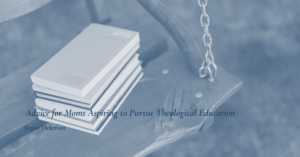Editor’s Note: This is part 3 of our Lyceum Disputation series considering how Baptists responded to American slavery. As with all our work, the London Lyceum publishes a range of viewpoints to encourage thinking.
Out of a multitude of controversies, the question of slavery was undoubtedly the most consequential for nineteenth-century American Baptists. It involved many people, a number of major events, and several viewpoints spread over an extended period of time. Further, Baptist viewpoints developed and changed along the way. This essay will look at one slice of nineteenth-century Baptist life (that of the northern seminaries from the 1830s to beyond the Civil War) as a window into how American Baptists approached this question. This brief history will show a slow progression from antislavery “neutrality” to a willingness to publicly condemn slavery. Some of this was a change from one generation to another, and some was individual change over time and after certain events. By surveying this history, we get a glimpse into some of the factors that complicate a historical understanding of how Baptists responded to the question of slavery.
The Northern Baptist Seminaries
A couple points of clarification are helpful as we think of northern Baptist seminaries. First, northern Baptists had three graduate-level theological schools prior to the Civil War.[1] The first was opened in 1825 with the founding of Newton Theological Institute in Newton Centre, Massachusetts (on the outskirts of Boston). The second was Hamilton Theological Seminary in Hamilton, New York, which has roots in the Hamilton Literary and Theological School that was opened in 1819. The L&T school broadened and developed a graduate-level seminary in the 1830s.[2] Newton and Hamilton were joined by Rochester Theological Seminary when it was opened in 1850 following a contentious split from Hamilton.[3] It would not be until after the Civil War that further northern seminaries would be established.
Second, while there was a spectrum of views on slavery, in the North the most common views were the antislavery and the abolitionist camps. Most in the North were antislavery. This group saw slavery as a political, economic, social, and moral evil,[4] but they resisted the need for widespread action and tended to see slavery mostly as a problem the South needed to solve. These northerners were willing to associate with southerners, even in ministry, so long as they did not engage directly with slavery. Abolitionists viewed such a position as inconsistent. The problem was, as Foss and Mathews showed, when push came to shove, there was no true neutrality, even for antislavery neutrals. “When the broad universal proposition is laid down that slave-holders and non-slave-holders stand on the footing of perfect moral equality; that is that slave-holding is no encroachment on moral right, the anti-slavery men of the North cannot yield their assent.”[5] In other words, there was a desire to maintain neutrality, but when pressed it could not have it both ways. The events of this time provided sufficient pressure to expose as much. The men who taught at Newton, Hamilton, and then at Rochester, like all Baptists, could not avoid the slavery question.
The Neutrality Option
American Baptists formed a national organization in 1814 with the express purpose of supporting missions work. This Triennial Convention provided the primary context for the Baptist debate over slavery, especially in the 1830s and 1840s. As H. Leon McBeth has famously asserted, the “blunt historical fact” is that the splitting of this group and the forming of the Southern Baptist Convention in 1845 was due mainly to slavery.[6] While there were many events in various places that led up to this split, the primary arena surrounded the Home and Foreign Missions Societies of the Triennial Convention. The majority of the Triennial Convention sought to hold to a position of neutrality, meaning they refused to set up slave ownership as a standard for or against approval for potential missionaries. They argued that Baptist autonomy allowed each local church to decide their own views and that the Triennial Convention had been set up explicitly as a missions group and not as an arbiter for this theological debate. The failure of this viewpoint came with the famous Georgia Test Case and Alabama Resolutions in 1845, which exposed the impossibility of neutrality.[7] The mission boards at different times voted to uphold a stance of neutrality on the slavery question. Included on the board who voted for neutrality in 1840 were Irah Chase, Barnas Sears, and Henry Ripley, all professors at Newton.[8] These men could all be identified as antislavery men, but neutrals in the denominational debates.
Newton, being in New England, found abolitionist sentiment much more conducive than Hamilton, being in central New York. This shows itself in the ways the schools were willing to expose their students to different views. Newton had a “Society of Inquiry” for their student body, which would debate various controversial subjects, including the merits of abolition.[9] Hamilton, on the other hand, while also being largely antislavery on a personal level, went out of their way to avoid allowing any outbreak of abolitionist sentiment on campus.[10] The leadership was keenly aware of the effect that slavery discussions had on missions work. They felt the debate had divided missionary interest on campus, with the effect that it greatly hindered missions work and the missionary spirit.[11] In the late 1830s and early 1840s, the leadership of Hamilton actively stopped the forming of antislavery societies on campus on three different occasions.[12] Hamilton, however, did allow Richard Fuller, who famously defended slavery in a series of letters with Francis Wayland, to come and present his pro-slavery views at their Society of Inquiry for two days. And, in 1846, after New York denied suffrage to black Americans and a Hamilton student named G. G. Ritchie wrote an article for a local paper arguing against the ruling, the student was expelled from the school.[13] Neutrality looked different at each school. More importantly, it proved a tricky position to hold.
Western Baptist Theological Institute
When discussing the 1845 split among American Baptists, a relatively unknown episode is that of the Western Baptist Theological Institute. In the 1830s and 1840s, Baptists in several states on the Western frontier, both north and south of the Ohio River, came together to form a graduate-level theological school. The school took a decade to plan and was finally opened in 1844. Its founders sought to build it on the support of both north and south. In reality, much of its support and students—and all its professors—came from the North, but the school was located across the Ohio River from Cincinnati in Covington, Kentucky.[14]
As things turned out, Western was a major flashpoint, a “harbinger of both short-lived harmony among Baptists and the extreme sectionalism that would eventually divide the nation and the Baptist family.”[15] Western’s first president was Robert Pattison, who arrived on campus in 1845 having come straight from serving on the Board of Foreign Missions where he was alleged to have pled with a southern missionary to resign on account of being a slave owner.[16] This created a controversy on campus among the southern supporters of the school. After the Alabama resolution was passed, Pattison was confronted by southern board members to see where he stood. As a neutral, he would not take a side, which was interpreted as being supportive of abolitionist sentiments. This led to years of controversy, Pattison leaving in 1848, and the eventual closing of the school in 1853.[17]
Pattison and certain other Western faculty, including Ebenezer Dodge and Ezekiel Gilman Robinson, eventually found their way to the northern seminaries. Pattison went to Newton where he taught theology until 1854 when he moved on to Waterville College in Maine. Dodge and Robinson found pastoral work before becoming theology professors and then University presidents at Rochester (Robinson, 1853–1872) and Hamilton (Dodge, 1861–1890), respectively. The fact that three Western men became key leaders at northern seminaries for several decades plays into subsequent history on the slavery debate.
Approaching the War
When he was at Western, Pattison surmised that the southern board members considered him an abolitionist while those from the North considered him pro-slavery.[18] This would certainly change in the following years. While at Waterville, he served on the committee that provided a resolution to the Maine Baptist Convention in 1854 stating that slavery was fundamentally wrong. This resolution further recommended passive disobedience to the Fugitive Slave Law, condemned the Kansas-Nebraska Act, recommended preachers speak freely that slavery is a moral matter, declared that slavery should be illegal in the United States, and said church members should only vote for such politicians as would carry out these wishes.[19] By the end of the 1850s Pattison had evidently moved away from the neutrality stance to one of clear condemnation of slavery.[20]
Newton also became more explicit in its support of antislavery causes in the 1850s. A young professor, Alvah Hovey, joined the faculty in 1849. He was a lifelong opponent of slavery. As a student at Dartmouth College, he had received educational funds for being a member of an antislavery society and also for helping a slave escape to Canada.[21] He was perhaps not a radical abolitionist, but he was certainly more than the neutral antislavery man. Hovey belonged to the newer generation at Newton and represented the future (he would teach at Newton until 1903).[22] As we will see, the 1850s saw Newton become explicit in its antislavery rhetoric.
A particularly instructive event occurred June 23, 1856.[23] There was a meeting of Newton faculty and students at the seminary chapel to discuss the state of the nation in regard to slavery. Those in attendance included professors Henry Ripley, Albert Arnold, and Alvah Hovey. Another professor, Horatio Hackett, could not attend due to illness but nevertheless sent his blessing, as did the pastor of First Baptist Church of Newton Centre, O. S. Stearns. Those who attended made a several unanimous resolutions, the most telling being:
That judging the spontaneous dictates of reason, and especially by the Gospel requirements of equal love for the rights and interests of all men, we regard slavery, particularly as it exists now in the light of the nineteenth century, as a great and grievous sin, offensive to God and ruinous to men, and that therefore no Christian consistently be indifferent or inactive, till human bondage shall cease.[24]
They also condemned the beating of Senator Sumner, called out the President of the United States for being “prostituted to the maintenance and propagation of slavery,” and resolved to oppose and seek “to uproot the sin of slavery, as all other sins, resting our hopes of success on the gracious and promised aid of our God…”[25] Clearly, the atmosphere at Newton had become willing to call for public change.
The War and Beyond
The Civil War solidified the northern Baptist viewpoint. Student sentiment at all three seminaries was nearly unanimous in favor of the Union and the abolition of slavery. Because such a large percentage joined the Union efforts, the attendance at the seminaries dropped dramatically. Newton, for its part, had a long history of its students being active in antislavery and abolitionist causes. After the war, many alumni advocated for the rights of freedmen and were heavily involved in their education.[26] Hamilton saw some 110 of its current students and alumni join the Union army, as well as several faculty members.[27] Rochester saw 85 of its 198 living students and alumni join the Union army and only one the Confederacy.[28]
Those faculty who wrote on the subject of the war tended to see a Northern victory as a sign of the progress of a Christian nation and of God’s favor on the Union for overcoming the sin of slavery.[29] Horatio Hackett, professor of Biblical Literature and Interpretation at Newton, abhorred slavery and on several occasions addressed the issue. When Abraham Lincoln gave his Emancipation Proclamation, Hackett took the time to teach his class of its importance. Theologically, Hackett argued that all races were derived from Adam.[30] And, when a war memorial was built in Newton Centre, he spoke at the dedication and described the cause of the Union as just because slavery was a sin.[31] He even wrote a book extolling the virtues of Union soldiers.[32]
By the 1870s, Hovey was explicitly teaching against slavery in his ethics textbook. When addressing why slavery is seemingly approved in the Bible, he said the Bible does not prescribe it, rather it allowed it in the Mosaic Law due to the hardness of the hearts of the people. Scripture ameliorated the effects of slavery, according to Hovey, thus speaking to its condemnation.[33] By the end of the century, Ezekiel Robinson, by this time no longer teaching at Rochester, declared that “domestic slavery happily has ceased from among us, and no unprejudiced person now ventures to defend it, even on the low ground of economics, political or domestic.”[34]
Concluding Thoughts
Writing in 1860, David Benedict opined that, in the first third of the nineteenth century, southerners modified their stance toward slavery. In preparation for writing his history textbooks, Benedict had travelled extensively among Baptists in the South in the early nineteenth century. Comparing those early century southerners to those in midcentury, he argued that southern Baptists used to hold to an apologetic stance “for a system which they could neither regulate nor abolish, but they would be very glad to be rid of, if this could be done in a legal and peaceable manner; while now they defend it on scriptural grounds.”[35] I would argue that northerners also developed in their stance over time, though in a different direction.
Early northern Baptist seminary leaders were mostly antislavery in name, but in action were conciliatory toward pro-slavery Baptists. The reality is that they struggled to find a voice against slavery when faced with direct opposition. Some gave little space and few arguments against slavery and more space and arguments for why neutrality was the best option. Others gave more space to abolitionist views but were still quick to take a neutral stance in times of controversy. The events of 1840–1865 definitively changed this. By the end of the century, condemnation of slavery was the universal northern Baptist view.
Northern seminarians provide an example of how there was an evolution toward what became a clear, northern Baptist viewpoint. Like many others of their day, it took moments of agitation, time, and sometimes a new generation, before they spoke out clearly. Baptist answers to the slavery question developed through time and controversy.
I believe that there are at least three lessons to be learned for contemporary Baptists from this tale. First, we should recognize the need for patience. We need patience in understanding complex historical figures, in recognizing the development of doctrinal viewpoints, and in dealing with others who we think should see their obvious blind spots. Second, we should exhibit boldness in our witness. We need boldness to stand for biblical and doctrinal truth, especially when it is contrary to our brethren and comes with great cost. Finally, we need humility. We ought to take heed to ourselves because we may very well have blind spots in our biblical and theological understanding. In each of these lessons we can be thankful for the gifts that our God has given us in the great communion of saints and in the Spirit, both of which help us in our pursuit of virtue and of the face of God.
[1] A helpful historical overview of Baptist seminaries of this time can be found in William H. Brackney, Congregation and Campus: North American Baptists in Higher Education (Macon, GA: Mercer University Press, 2008), chapter 8.
[2] There was a long-standing educational debate over the necessity and viability of collegiate, L&T hybrid, and “New England” graduate-level models of education. See William H. Brackney, “Nurseries of Piety or the School of Christ? Means and Models of Baptist Ministerial Education in Early America,” in Faith, Life and Witness: The Papers of the Study and Research Division of the Baptist World Alliance 1986–1990, ed. by William H. Brackney and Ruby J. Burke. Birmingham, AL: Samford University Press, 1990, 115–29.
[3] When Hamilton broadened it became Madison University, which then eventually became Colgate University, though Hamilton Seminary remained the name of the seminary for many decades. The story of Hamilton and of the “Removal Controversy” can be found in Howard D. Williams, A History of Colgate University 1819–1969 (New York: Van Nostrand Reinhold Company), 106–39.
[4] See A. T. Foss and E. Mathews, Facts for Baptist Churches. Collected, Arranged and Reviewed (Utica, NY: American Baptist Free Mission Society, 1850), 44–45. Foss and Mathews represented the abolitionist wing of northern Baptists. They wrote their book as a historical chastisement on the slow pace of reform among Baptists to recognize and deal with the seriousness of American slavery. They had little patience for northerners who wanted to take a neutral stance and they refused to grant Christian fellowship to Baptists defenders of slavery in the south. As one example, they pejoratively titled the SBC the “Southern Baptist Slaveholding Convention.”
[5] Ibid., 45.
[6] H. Leon McBeth, The Baptist Heritage: Four Centuries of Baptist Witness (Nashville: Broadman, 1987), 382.
[7] For brief overviews of this history, see McBeth, Baptist Heritage, 382–91; Thomas S. Kidd and Barry Hankins, Baptists in America: A History (New York: Oxford University Press, 2015), 125–9; Bill J. Leonard, Baptist Ways: A History (Valley Forge, PA: Judson Press, 2003), 185–9; and Robert G. Torbet, History of the Baptists, 3rd ed. (Philadelphia: Judson, 1973), 282–93.
[8] See Foss and Mathews, Facts for Baptist Churches, 76.
[9] Margaret Lamberts Bendroth, A School of the Church: Andover Newton across Two Centuries (Grand Rapids: Eerdmans, 2008), 58–9.
[10] I have given a somewhat simplified account as can be seen in the fact that in this region of New York a well-known abolitionist by the name of Jacob Knapp constantly caused controversy in the school and town for many reasons beyond slavery. Hamilton’s hesitancy to allow anti-slavery viewpoints was influenced to some extent by its relationship to Knapp. Knapp was also a leading figure in the Removal Controversy where Hamilton was split and Rochester Theological Seminary started. See Gary W. Long, “John S. Maginnis,” in A Noble Company: Biographical Essays on Notable Particular-Regular Baptists in America, edited by Terry Wolever, Volume Ten (Springfield, MO: Particular Baptist Press, 2018), 135–8.
[11] Benjamin F. Bronson and Jirah D. Cole, The First Half Century of Madison University (1819–1869) or the Jubilee Volume, Containing the Sketches of Eleven Hundred Living and Deceased Alumni; with Fifteen Hundred Portraits of Founders, Presidents, and Patrons, (New York: Sheldon & Co., 1872), 148.
[12] Williams, A History of Colgate University 1819–1969, 68–69.
[13] Foss and Mathews, Facts for Baptist Churches, 370.
[14] For Western’s history, see John Stevens, A Brief Historical Sketch of the Western Baptist Theological Institute (Cincinnati: D. Anderson, 1850).
[15] Brackney, Congregation and Campus, 263. On the same page, Brackney quotes Leo Crismon when he says that “the Institute was located on southern soil, but the control was in the hands of men from the north side of the Ohio River” (Leo T. Crismon, “Theological Education in Kentucky,” in Baptists in Kentucky 1776–1976 (Middletown, KY: Kentucky Baptist Convention, 1975), 220).
[16] Foss and Mathews, Facts for Baptist Churches, 101–104.
[17] See the editorial essay on “The Western Theological Institute of Covington, Kentucky” in Ezekiel Gilman Robinson, An Autobiography: with a Supplement by H. L. Wayland and Critical Estimates, ed. by E. H. Johnson (Boston: Silver, Burdett and Company, 1896), 351–6.
[18] Ibid., 353.
[19] André Gazal, “Robert E. Pattison, 1800–1874,” in A Noble Company: Biographical Essays on Notable Particular-Regular Baptists in America, edited by Terry Wolever, Volume Nine (Springfield, MO: Particular Baptist Press, 2017), 495–500.
[20] Foss and Mathews, Facts for Baptist Churches, as abolitionist Baptists writing in 1850, gave no quarter to Pattison, nor to certain seminary men at Hamilton, for their neutrality to that point. It does seem, though, that Pattison changed his stance after the Western experience.
[21] George Rice Hovey, Alvah Hovey: His Life and Letters (Philadelphia: Judson, 1928), 20.
[22] See Matthew C. Shrader, Thoughtful Christianity: Alvah Hovey and the Problem of Authority within the Context of Nineteenth-Century Northern Baptists, Monographs in Baptist History (Eugene, OR: Pickwick, 2021), chapter 2.
[23] This event and the resolutions adopted are recorded in the Watchman and Reflector of Boston: “Meeting at Newton Centre,” Watchman and Reflector, editorial, July 3, 1856. The event is also discussed in Hovey, Alvah Hovey, 62.
[24] See “Meeting at Newton Centre.”
[25] Ibid.
[26] For various Newton students, see Richard Donald Pierce, ed. A General Catalogue of The Newton Theological Institution 1826–1943: With Biographical Sketches of Professors and Students in Andover Theological Seminary, 1931–1943. Newton Centre, MA: Newton Theological Institution, 1943.
[27] For various Hamilton students, see Elmer William Smith, ed. Colgate University General Catalogue, Volume 1 (Hamilton, NY: Colgate University Press, 1937). For some comment on Hamilton students and the Civil War, see The Colgate University Centennial Celebration, 1819–1919 (Hamilton, NY: Colgate University Press, 1920), 77.
[28] Arthur J. May, A History of the University of Rochester 1850–1962 (Rochester, N.Y.: University of Rochester Press, 1977), 52.
[29] See Hovey, Alvah Hovey, 92 and 110; Ebenezer Dodge, The Evidences of Christianity, with an Introduction on the Existence of God and the Immortality of the Soul (Boston: Gould and Lincoln, 1869), 189, 191, and 216; and Ezekiel Gilman Robinson, Principles and Practice of Morality; Or, Ethical Principles Discussed and Applied (Boston: Silvery, Burdett, & Co., 1896), 237.
[30] George H. Whittemore, Memorials of Horatio Balch Hackett (Rochester, N.Y.: E. R. Andrews, 1876), 235; and Blair Waddell, “Horatio B. Hackett,” in A Noble Company: Biographical Essays on Notable Particular-Regular Baptists in America, edited by Terry Wolever, Volume Ten (Springfield, MO: Particular Baptist Press, 2018), 230.
[31]Whittemore, Memorials of Horatio Balch Hackett, 105–28, which includes the entirety of the speech.
[32] Horatio B. Hackett, Christian Memorials of the War; Or, Scenes and Incidents Illustrative of Religious Faith and Principle, Patriotism and Bravery in Our Army, with Historical Notes (Boston: Gould and Lincoln, 1864).
[33] Alvah Hovey, Manual of Systematic Theology and Christian Ethics (Philadelphia: American Baptist Publication Society, 1877), 399–401.
[34] Robinson, Principles and Practice of Morality, 237.
[35] David Benedict, Fifty Years among the Baptists (New York: Sheldon & Company, 1860), 175.
Author
-
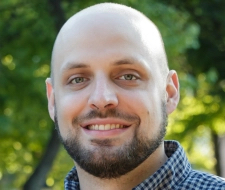
Matthew C. Shrader (PhD, Trinity Evangelical Divinity School) is Associate Professor of Church History at Central Baptist Theological Seminary of Plymouth, Minnesota. His research focuses on the history and theology of nineteenth-century northern Baptists, particularly the seminaries. He is the author of Thoughtful Christianity: Alvah Hovey and the Problem of Authority within the Context of Nineteenth Century Northern Baptists (Pickwick, 2021). He and his wife Tarah are both native Coloradans. They have three children and now live in Crystal, Minnesota.
View all posts
